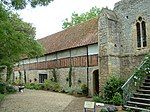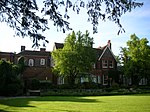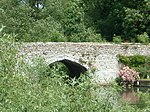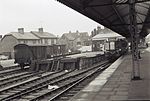Andersey Island
Islands of OxfordshireIslands of the River ThamesSouth Oxfordshire DistrictUse British English from March 2018

Andersey Island is a 273-acre (110.5 ha) area of flood-meadow and former flood-meadow south-east of Abingdon Bridge, Abingdon, Oxfordshire on the reach above Culham Lock in which parish it lies however maintaining close links with Abingdon by virtue of its current amenities. It is the second-largest island of the non-tidal course of the River Thames in England upstream of the Tideway — if disqualifying the villages of Dorney and Eton, Berkshire enclosed by the engineered Jubilee River. Andersey means Andrew's island after its chapel to St Andrew, demolished, built about 1050 CE.
Excerpt from the Wikipedia article Andersey Island (License: CC BY-SA 3.0, Authors, Images).Andersey Island
Abingdon Weir, Vale of White Horse Abingdon on Thames
Geographical coordinates (GPS) Address Nearby Places Show on map
Geographical coordinates (GPS)
| Latitude | Longitude |
|---|---|
| N 51.667 ° | E -1.27 ° |
Address
Abingdon Weir
OX14 3NW Vale of White Horse, Abingdon on Thames
England, United Kingdom
Open on Google Maps









